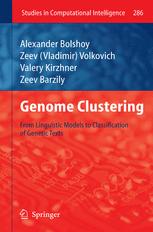

Most ebook files are in PDF format, so you can easily read them using various software such as Foxit Reader or directly on the Google Chrome browser.
Some ebook files are released by publishers in other formats such as .awz, .mobi, .epub, .fb2, etc. You may need to install specific software to read these formats on mobile/PC, such as Calibre.
Please read the tutorial at this link: https://ebookbell.com/faq
We offer FREE conversion to the popular formats you request; however, this may take some time. Therefore, right after payment, please email us, and we will try to provide the service as quickly as possible.
For some exceptional file formats or broken links (if any), please refrain from opening any disputes. Instead, email us first, and we will try to assist within a maximum of 6 hours.
EbookBell Team

5.0
88 reviewsThe study of language texts at the level of formal non-semantic models has a long history. Suffice it to say that the well-known Markov chains were first introduced as one of such models. The representation of biological data as text and, consequently, applications of text-analysis models in the field of comparative genomics are substantially newer; nevertheless the methods are well developed. In this book, we try to juxtapose linguistic and bioinformatics models of text analysis. So, it can be read, in a sense, “in two directions” – the book is written so as to appeal to the bioinformatician, who may be interested in finding techniques that had initially appeared in the natural language analysis, and to computational linguist, who may be surprised to discover familiar methods used in bioinformatics. In the presentation of the material, the authors, nevertheless, give preference their professional field - bioinformatics. Therefore, even a specialist in bioinformatics can find something new himself in this book. For example, this book includes a review of the main data mining models generating the text spectra. The chapters of the book assume neither advanced mathematical skills nor beginner knowledge of molecular biology. Relevant biological concepts are introduced in the beginning of the book. Several computer science issues relevant to the topics of the book are reviewed in the three appendices: clustering, sequence complexity, and DNA curvature modeling.